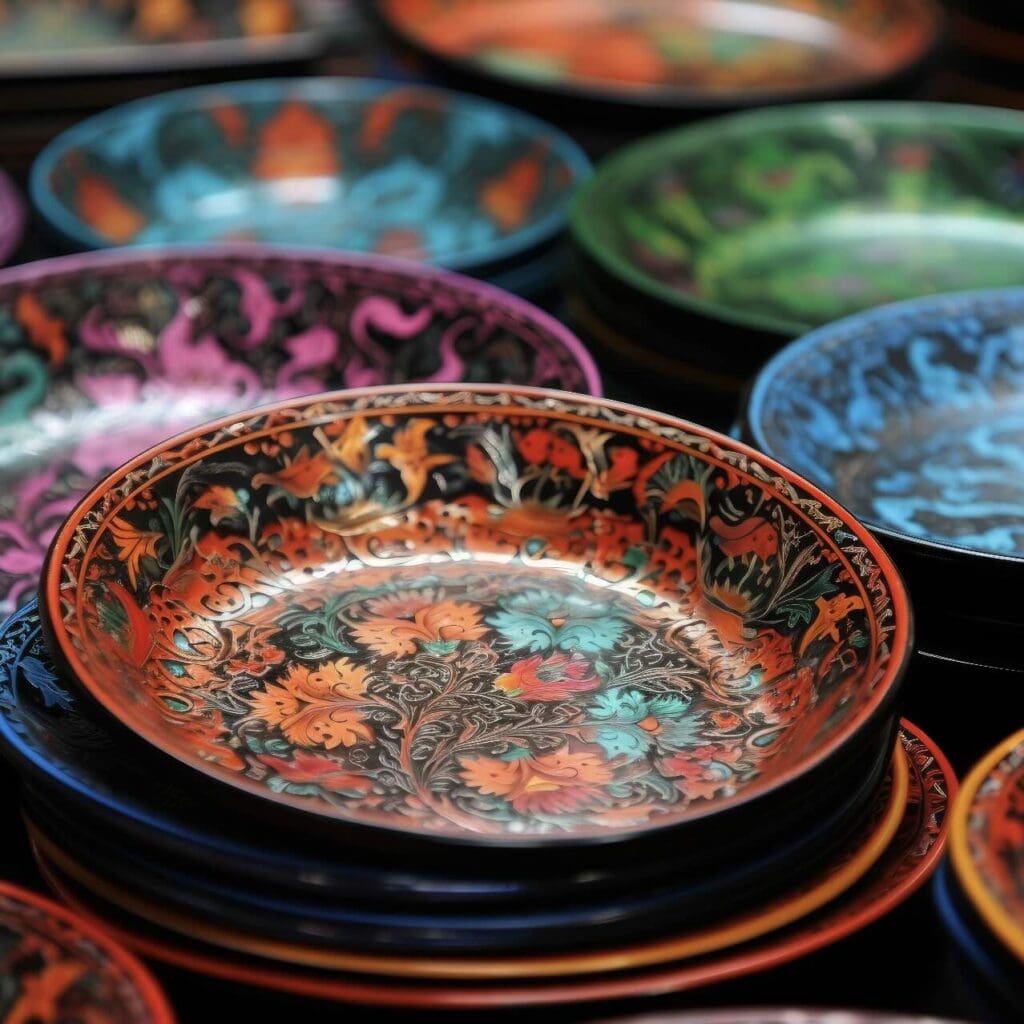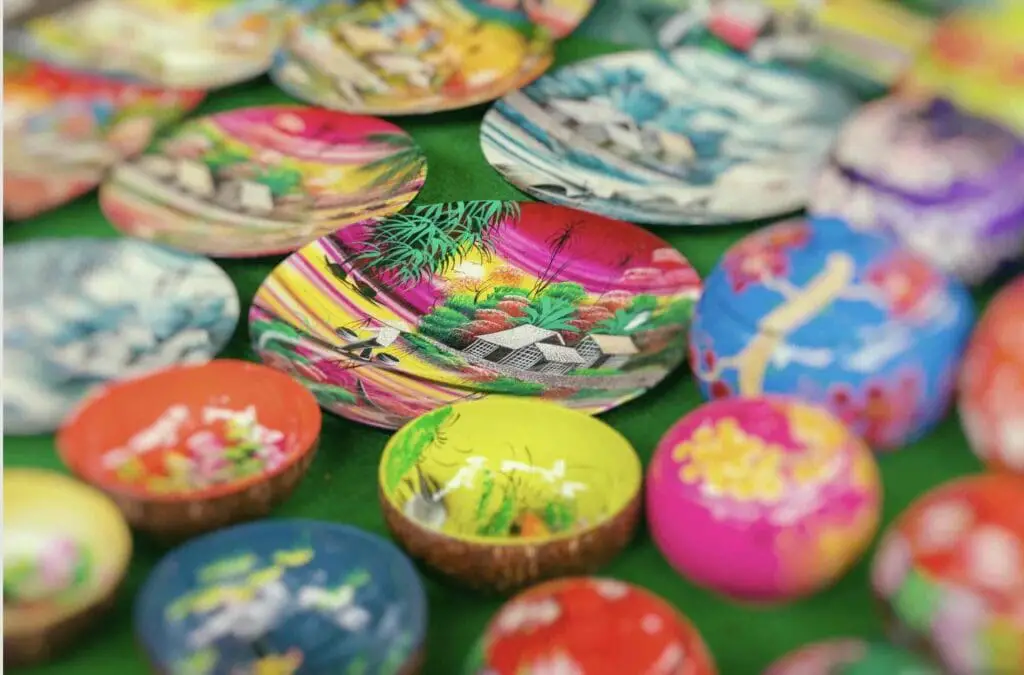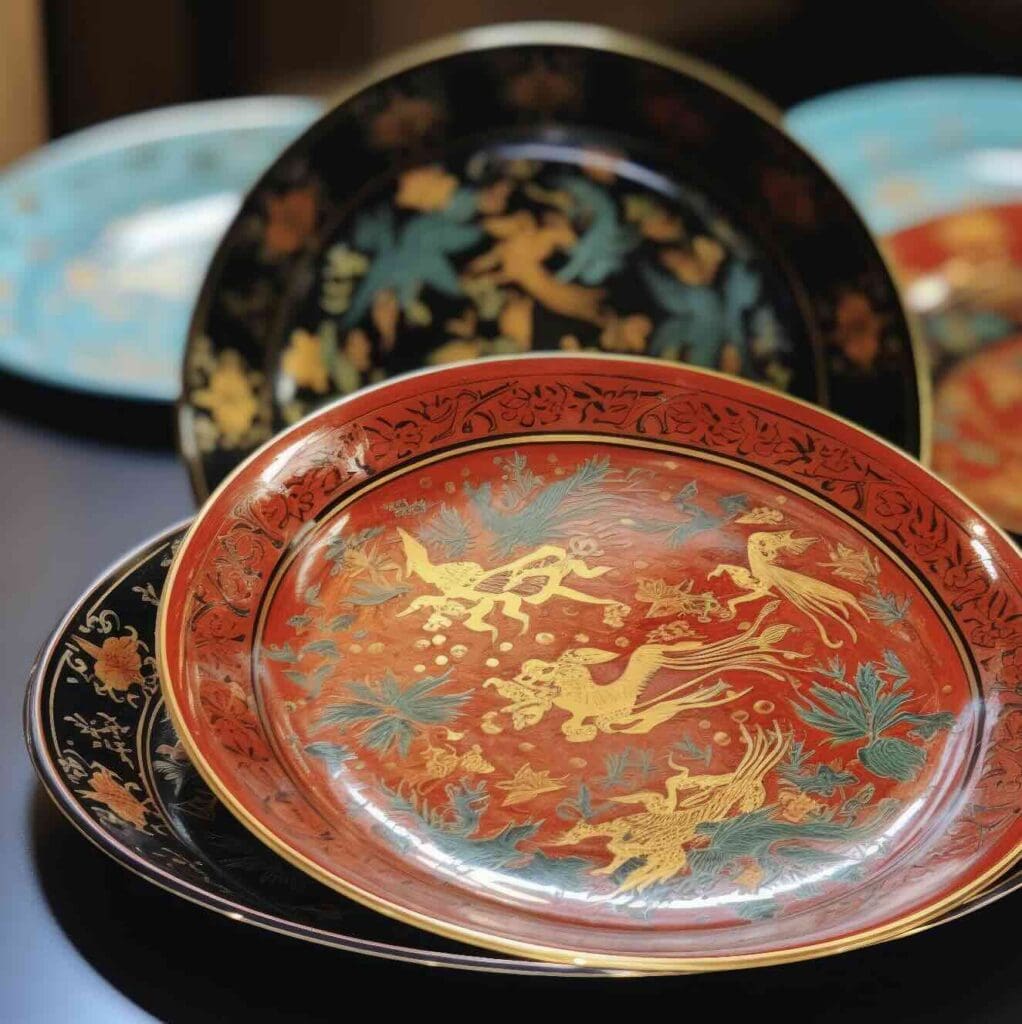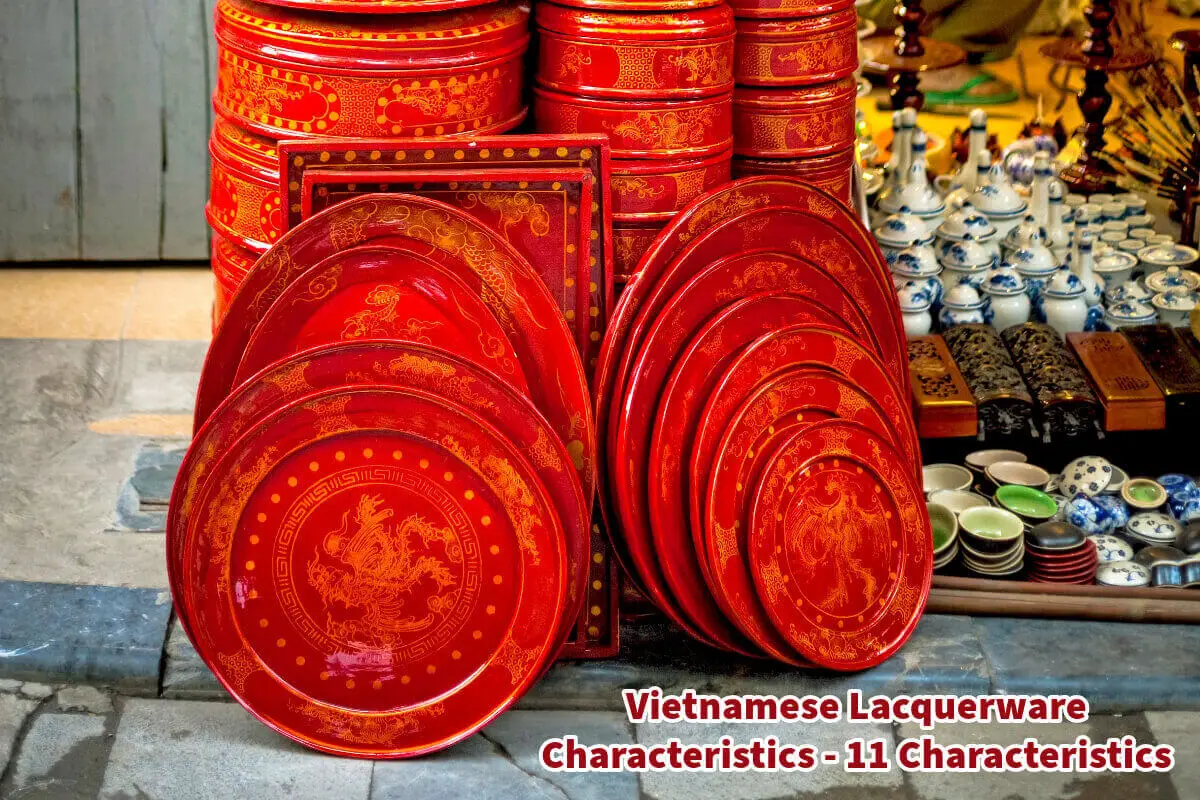Vietnam has been renowned for its intricate and durable lacquerware, a craft deeply embedded in its cultural fabric for centuries.
Particularly outside of Hanoi, entire villages have specialized in producing these exquisite pieces for generations. From everyday utensils to decorative art and religious artifacts, Vietnamese lacquerware has held its ground as a practical and artistic marvel. Here are 11 top characteristics that define this age-old craft.
Table of Contents
- The Art And Allure Of Vietnamese Lacquerware: 11 Characteristics That Make It Unique
- 1. Durability: Built To Last
- 2. Natural Beauty: A Touch Of Elegance
- 3. Waterproof: Practical And Usable
- 4. Heat Resistant: A Hot Choice
- 5. Protective: More Than Just A Pretty Face
- 6. Hand-Painted: A Canvas Of Imagination
- 7. Dried Several Times: A Layered Experience
- 8. Preservation: The Art Of Longevity
- 9. Artistic Evolution: From Functional To Spiritual
- 10. Cultural Relevance: An Evergreen Tradition
- 11. Sustainable Practices: Beauty With Responsibility
- Related Content
The Art And Allure Of Vietnamese Lacquerware: 11 Characteristics That Make It Unique
Vietnamese lacquerware is an ancient craft with an enduring appeal, fusing functionality with art. Originating as a practical way to enhance the durability of everyday items, it has metamorphosed into a form of expression, serving both aesthetic and spiritual purposes.

But what about Vietnamese lacquerware makes it stand out from its counterparts in other cultures?
Below, we delve into 11 unique characteristics that contribute to the allure of this traditional art form.
1. Durability: Built To Last
One of the most outstanding characteristics of Vietnamese lacquerware is its longevity. The base materials, which often include wood and bamboo, are highly durable in their own right. When coated with layers of lacquer, the items become resistant to wear and tear, ensuring that they last for years, if not generations.
2. Natural Beauty: A Touch Of Elegance
Another captivating element is the natural beauty inherent in these lacquered items. The meticulous craftsmanship accentuates the grain patterns in the wood or the intrinsic beauty of bamboo. The lacquer highlights and protects these natural features, making each piece a unique work of art.
3. Waterproof: Practical And Usable
A functional advantage of lacquered goods is their waterproof quality. Lacquer forms an impermeable seal, making it an ideal material for objects that come into contact with liquids.
Many Vietnamese lacquers are sanded with water, adding a layer of waterproofing. This feature also ensures that the items can withstand the humidity in tropical climates like Vietnam’s.
4. Heat Resistant: A Hot Choice
Another practical characteristic of Vietnamese lacquerware is its heat resistance. Whether a decorative plate or furniture, the lacquer coating ensures the item can withstand moderate heat levels without warping or discoloring.
5. Protective: More Than Just A Pretty Face
The lacquer isn’t merely an aesthetic choice but also a protective function. It protects against environmental factors like moisture, dirt, and insects, ensuring the base material remains unscathed.

6. Hand-Painted: A Canvas Of Imagination
One of the most charming aspects of Vietnamese lacquerware is that each piece is often hand-painted. This imbues the object with individuality and soul, as artisans employ traditional techniques to bring landscapes, mythological scenes, or intricate patterns to life.
7. Dried Several Times: A Layered Experience
Creating a piece of Vietnamese lacquerware is no quick task. Each layer of lacquer is applied and then allowed to dry before the next layer is added. This process is often repeated multiple times, sometimes taking weeks to complete. Each layer adds depth and richness to the final product.
8. Preservation: The Art Of Longevity
The lacquer serves as a form of preservation, effectively sealing in the beauty and integrity of the base material for years. Unlike other coatings that may peel or degrade over time, a well-applied lacquer can indefinitely protect and enhance the material it coats.

9. Artistic Evolution: From Functional To Spiritual
Over the years, Vietnamese lacquerware has transcended its functional origins to serve aesthetic and religious purposes. It has become an essential part of Vietnamese culture, adorning temples and homes, and it’s even considered a spiritual medium in some contexts.
10. Cultural Relevance: An Evergreen Tradition
The production and use of lacquerware are deeply ingrained in Vietnamese culture. Not only is it used for a range of practical purposes, but it also holds significant cultural value. During festivals, religious rituals, and even gifting traditions, lacquerware is prominent.
11. Sustainable Practices: Beauty With Responsibility
As concerns about sustainability grow globally, Vietnamese lacquerware offers an eco-friendly choice. The primary materials—bamboo and wood—are both renewable resources. Even the lacquer sap, harvested mainly from the Rhus succedanea tree, is a renewable resource, making these products sustainable in handicrafts.
Vietnamese lacquerware is a perfect amalgamation of beauty, durability, and cultural richness. Whether you appreciate it for its practical attributes like heat resistance and waterproofing or for its artistic qualities, there’s no denying that this traditional Vietnamese craft is a true gem.
Its deep-rooted characteristics make it a desirable possession and a piece that tells a story—of skill, culture, and a heritage that has stood the test of time.
At Mondoro, we craft a diverse range of traditional Vietnamese lacquerware. We’ve covered you from boxes, trays, and lamps to furniture and various home decor accessories if you’re headed to connect with us.
Find out more about how Mondoro can help you create, develop, and manufacture excellent home decor and home furniture products – don’t hesitate to contact me, Anita. Check out my email by clicking here or become a part of our community and join our newsletter by clicking here.
Mondoro gives out a FREE Lookbook to anyone interested. You can receive a copy of our latest Lookbook by clicking here.
Listen to our Podcast called Global Trade Gal. You can find it on all major podcast platforms. Try out to listen to one of our podcasts by clicking here.
Subscribe to our Mondoro Company Limited YouTube Channel filled with great videos and information by clicking here.
Related Content
How to Manufacture Vietnamese Lacquerware?
Vietnamese lacquer requires many manufacturing steps in the lacquer production process, including making the base, then preparing the lacquer base to be applied, to finally applying the lacquer paint onto the surface. Every piece must be carefully sanded to give it a very smooth surface. Vietnamese lacquerware production requires a lot of skill and knowledge.
To learn more you can read How to Manufacture Vietnamese Lacquerware? An Insider’s Guide to Lacquer by clicking here.
Why Is It Called Mother Of Pearl?
The name mother used in Mother of Pearl is thought to come from a nearly obsolete meaning of mother, which means “scrum, drugs or leftover fifth.” This would be because the Mother of Pearl comes from the leftover shell of the oyster, clam, or mussel. The scientific name for Mother Of Pearl is nacre.
You can discover more about Why Is It Called Mother Of Pearl? Pearls and Mother of Pearls by clicking here.
Why Is It Called Mother Of Pearl? Pearls and Mother of Pearls
The name mother used in Mother of Pearl is thought to come from a nearly obsolete meaning of mother, which means “scrum, drugs, or leftover fifth.” This would be because the Mother of Pearl comes from the leftover shell of the oyster, clam, or mussel. The scientific name for Mother of Pearl is nacre.
You can discover more by reading Why Is It Called Mother Of Pearl? Pearls and Mother of Pearls by clicking here.


